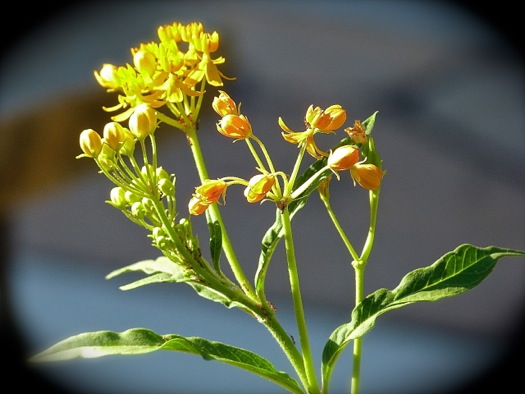Best of the Rest: 2018 Garden Images
 Thursday, January 10, 2019 at 5:00PM
Thursday, January 10, 2019 at 5:00PM Every year I like to go back through all the year's garden pictures and choose unused photos from each month. I select only shots I made of my own garden. These are images that never made it into a blog post, for various reasons, but perhaps deserve a look. At the least, they provide a review of the year. So to celebrate the passing of 2018, and to look forward to a new garden year, here are the best of the rest: 2018.
January: I tucked sprays of Arizona cypress around ornamental kale in a pot to make an attractive winter arrangement.
I tucked sprays of Arizona cypress around ornamental kale in a pot to make an attractive winter arrangement.
February: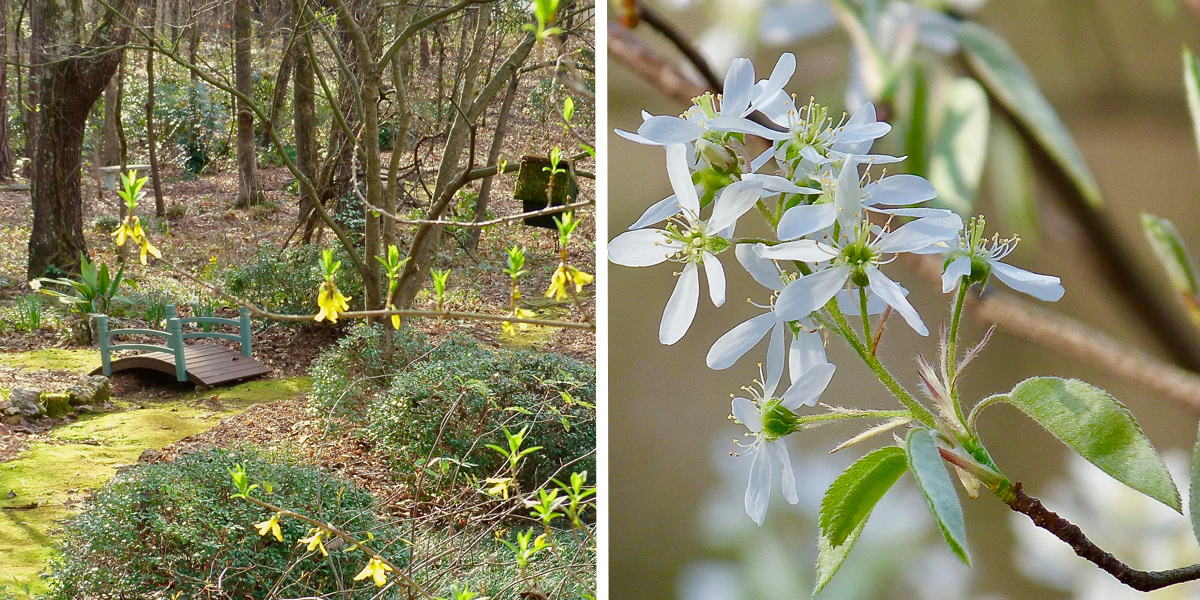 The small yellow blooms in the photo on the left are forsythia, and the white flowers on the right are from the Serviceberry tree (Amelanchier, also called Juneberry. Its edible berries ripen in June and taste a bit like blueberries. But the birds love them, so I let them have them.
The small yellow blooms in the photo on the left are forsythia, and the white flowers on the right are from the Serviceberry tree (Amelanchier, also called Juneberry. Its edible berries ripen in June and taste a bit like blueberries. But the birds love them, so I let them have them.
March:  A fern's newly emerging fiddlehead; ferns have an important presence throughout my garden.
A fern's newly emerging fiddlehead; ferns have an important presence throughout my garden.
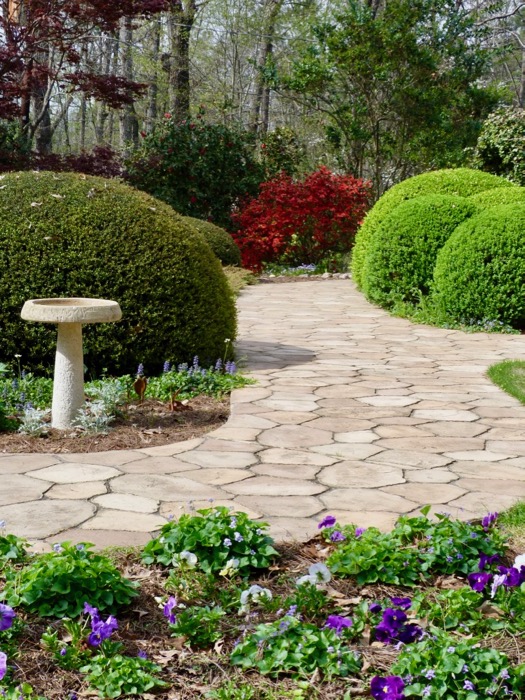 Here is a March view of the walk in front of our house.
Here is a March view of the walk in front of our house.
April: Left: Trillium in front of autumn fern. Right: Enkianthus blooms.
Left: Trillium in front of autumn fern. Right: Enkianthus blooms.
May: Left: Turkey tail fungus with resurrection fern. Right: Virginia sweetspire.
Left: Turkey tail fungus with resurrection fern. Right: Virginia sweetspire.
June: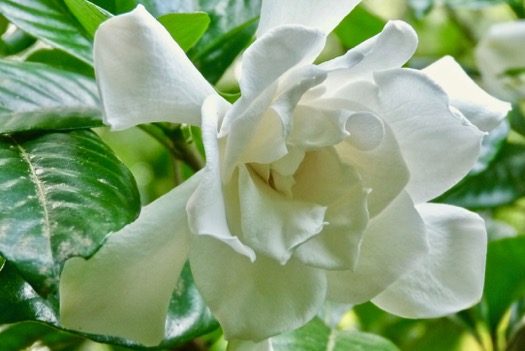 A large gardenia shrub on the edge of the woodland garden fills the area with sweet fragrance each June.
A large gardenia shrub on the edge of the woodland garden fills the area with sweet fragrance each June.
July: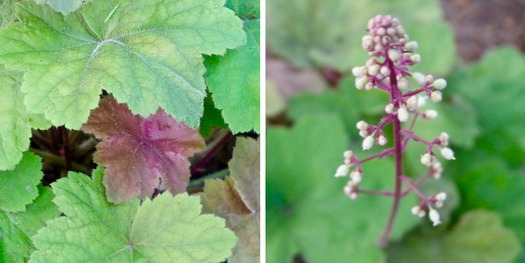 A beautiful heucherella and its bloom.
A beautiful heucherella and its bloom.
August:  Bugs love the hot, stressed-out conditions of August!
Bugs love the hot, stressed-out conditions of August!
September: Garlic chives, on the left, and spider lilies, on the right, both flourish in September.
Garlic chives, on the left, and spider lilies, on the right, both flourish in September.
 In spring 2018, we had to remove the beautiful Japanese maple that grew in front of the house, as ambrosia beetles had killed it. In September we replaced it with 'Rising Sun' redbud, seen here on the left.
In spring 2018, we had to remove the beautiful Japanese maple that grew in front of the house, as ambrosia beetles had killed it. In September we replaced it with 'Rising Sun' redbud, seen here on the left.
October: A female American robin enjoyed this birdbath. Her mate was nearby in the grass.
A female American robin enjoyed this birdbath. Her mate was nearby in the grass.
November: The tree in the background with the heart-shaped golden fall foliage is a native redbud.
The tree in the background with the heart-shaped golden fall foliage is a native redbud.

December: Once upon a time this Cryptomeria japonica was a living Christmas tree. After the holidays, we planted it in the front yard. Look at it now!
Once upon a time this Cryptomeria japonica was a living Christmas tree. After the holidays, we planted it in the front yard. Look at it now!
Did you have a favorite month? Happy gardening in 2019!







